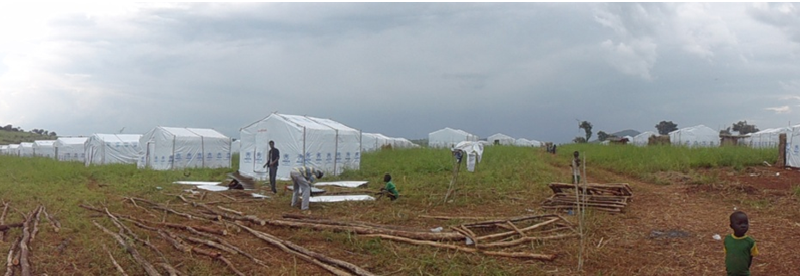Humanitarian Response Program (HRP)
Humanitarian Response Program (HRP)
Multi Integrated Support Ethiopia (MISE) had implemented several development and community based projects in different parts of the country. As a result of this the organization had addressed the most pressing needs and gaps of the most marginalized and hard to reach communities. Since, 2014/15 MISE had started to work and intervene on Humanitarian Response Program (HRP) by targeting the growing and high number of refugees to Ethiopia especially from South Sudan, Eretria, Somalia and other countries. MISE had conducted a Humanitarian Response Assessment Matrix to identify the gaps of the refugee community. Accordingly, MISE had identified the following intervention thematic areas under its HRP.
Access to Shelter
Shelter is essential for the physical protection and privacy of people affected by displacement, allowing them to lead lives in a safe, supportive and culturally appropriate setting.
MISE seeks to protect rights and save lives by providing timely shelter interventions to meet both immediate and temporary needs, promoting durable solutions and enabling families to access social services and livelihood options.
Principles
MISE Shelter activities are undertaken according to the principles that:
- Design appropriate construction standards, methods and cross cutting issues are negotiated with all parties involved (beneficiaries, host population, authorities, donors and humanitarian community).
- Shelter solutions shouldcomply with and of appropriate standard in line with SPHERE and other relevant international humanitarian standards.
- Interventions should benefit local communities and strengthen local competences and capacities as well as self-reliance and self-help (to this end assisted self-build options are preferred).
- Projects are appropriate to the local context, cultural and social norms and consider differential needs (age, gender and disability) in design and functionality.
- All built shelters and structures are safe and secure, designed to resist local natural and operational hazards.
- Any construction and use of materials should be environmentally appropriate and environmental restoration considered where possible.
- Special attention should be made on transparency and anti-corruption practices related to procurement and contracting.
- Equitable participation and proprietary rights for both women and men are ensured.
Scope
MISE’s shelter activities aim to facilitate both the physical and social needs of targeted beneficiaries in all phases of a crisis and across a range of settlement options beyond the household, including:
- Individual and collective housing
- Schools
- Social and technical community infrastructure
- Settlement and camp planning
MISE’s shelter programmes do not focus solely on the delivery of shelter as a physical product but should also include a range of wider social and settlement related considerations which enhance and complement the impact of individual shelter solutions such as:
- Physical safety and security
- Best possible security of tenure
- Access to livelihoods and employment opportunities
- Access to basic social services
- Access to water, sanitation and hygiene (WASH) services
- Social and cultural norms and standards
- Environmental considerations and adaptation to natural hazards (DRR)
- Settlement management and governance
- In all stages of crisis and level of emergency MISE will seek to address the needs of affected households, host families, grouped settlements and communities.
Acute Emergencies:
MISE will focus on living solutions offering physical protection from climatic hazards, as well as providing protection of assets, privacy and dignity. Specific activities may include:
- Provision of emergency shelters and tents
- Planning and preparing of camps or other settlements
- Provision of essential social and technical infrastructure including spaces for emergency education, drainage and sanitation facilities
- Provision of non-food items (NFIs) and/or cash/vouchers
Early Recovery/Durable Solutions:
MISE will focus on voluntary and sustainable solutions contributing to the overall recovery of communities. This will be done by ensuring that building and settlement (re)construction is used as an economic multiplier, that social interaction between various groups increases and that necessary infrastructure for livelihood activities is in place. Specific activities may include:
- Provision of durable housing and settlement solutions
- Linking of settlement options to viable livelihoods opportunities
- Supporting dependable tenancy arrangements
- Advocating for access to social and public services
Approach
Based on contextual analysis MISE will define appropriate strategies and activities to address identified needs. This analysis will consider all relevant contextual factors such as scale, climate, culture, available materials and skills, logistics, funding, legislation and policies.
MISE approach to shelter provision is:
- To mobilize, train and organize communities and individuals during shelter provision
- To support the coping strategies and solutions of beneficiaries
- To support local institutions
- To use local labour, goods, materials, and services wherever possible
Approach specific to housing
Cost-efficient shelter with the best possible durability
Approach specific to schools
- Support the establishment of structures and routines for continuous operation and maintenance of school buildings and attached sanitation facilities – either by authorities or local committees.
Approach specific to social and technical infrastructure
- Various stakeholders (local, national and international) are involved in the process of needs identification and design.
- All social/technical infra-structure complies with the needs of various other sectors and programmes.
- Roles and responsibilities for the operation, budgeting and maintenance of infrastructure and services are explicit and realistic. Those deemed as responsible for recurrent financing and management (authorities, local communities, private sector) are supported to take on their role.
Approach specific to settlement and camp planning
- Negotiate appropriate physical standards, inclusion of infrastructure and inter-relation to the surrounding environment with the planning and managing authorities.
- To advocate for agencies, institutions and authorities to take on the construction and operation of infrastructure and services in the planned sites.



